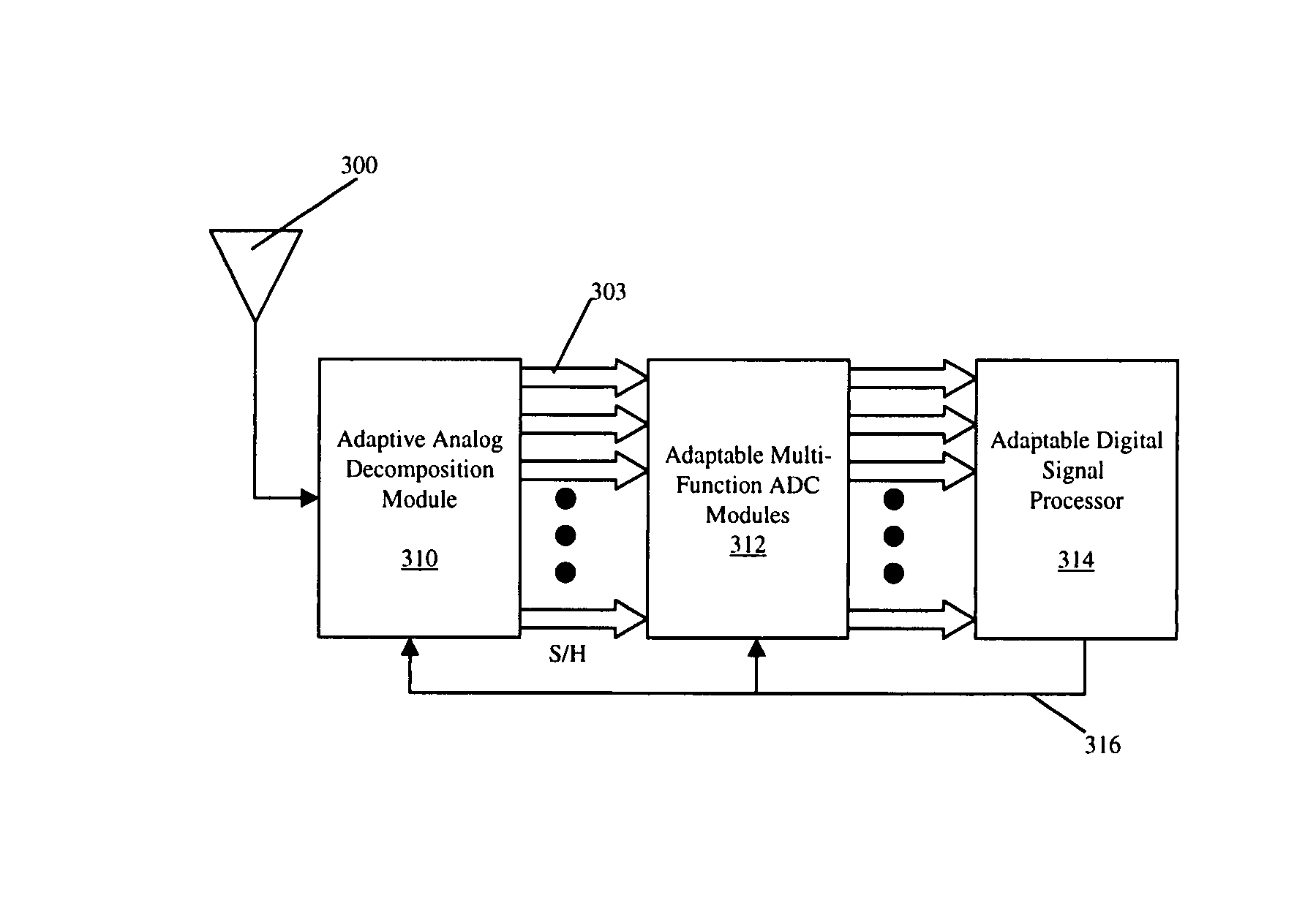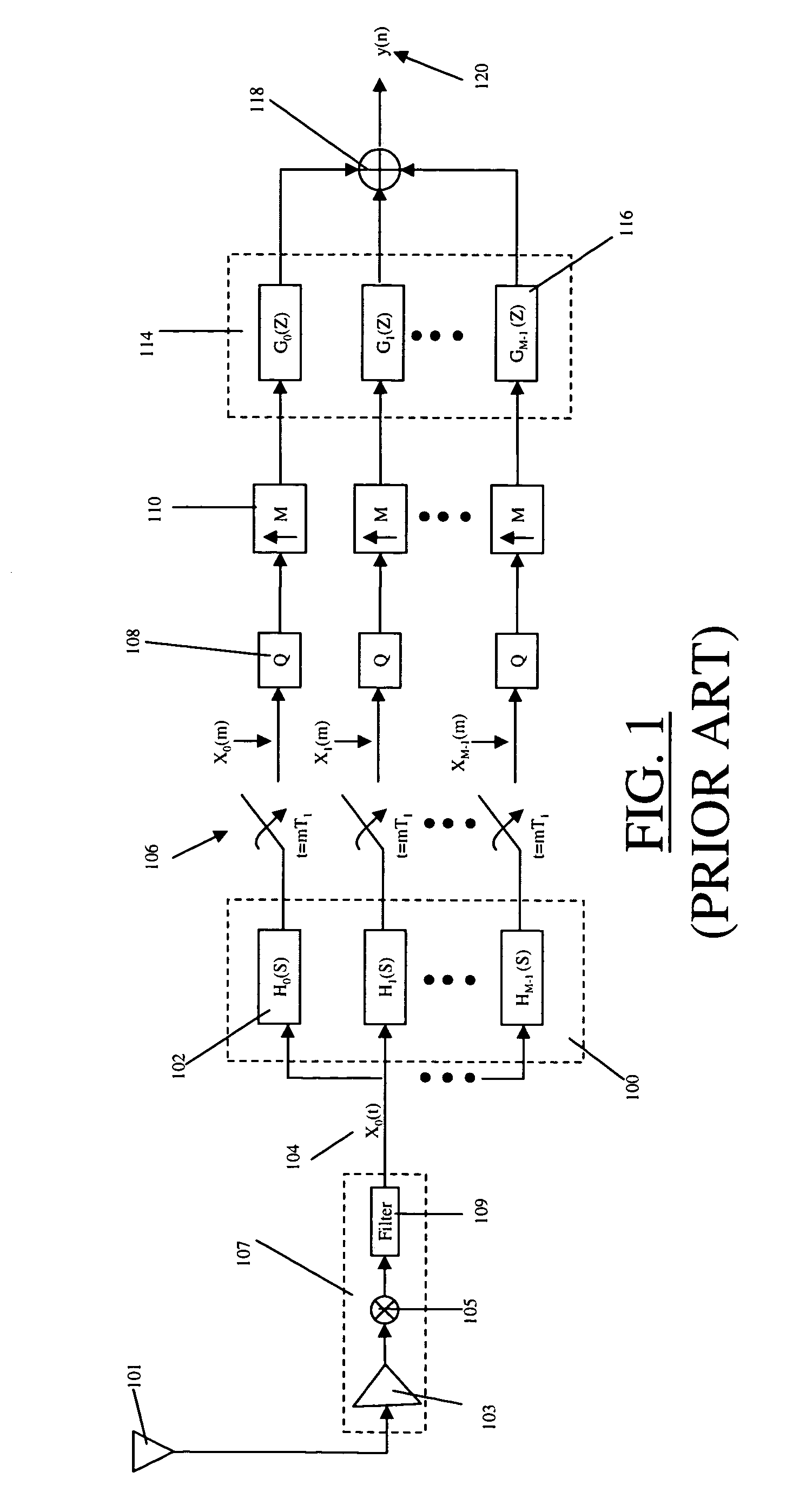Adaptive, intelligent transform-based analog to information converter method and system
an information converter and transform-based technology, applied in the field of wideband analog to information converters, can solve the problems of inefficient utilization of adc resources, and achieve the effects of effective removal of unwanted signals, high probability of detection, and high degree of automation
- Summary
- Abstract
- Description
- Claims
- Application Information
AI Technical Summary
Benefits of technology
Problems solved by technology
Method used
Image
Examples
first embodiment
(I) First Embodiment
[0114]This portion of the description focuses on the operation of each of the individual components of the first embodiment illustrated in the system overview shown in FIG. 3A. However, the general overall concepts described below in relation to FIGS. 6A to 6B, 7A, 7B, and 9A to 9C apply equally to both the Analog Transform Converter Module 302 of the first embodiment and the Adaptive Analog Decomposition Module 310 of the second embodiment. For clarity and ease of readability, only terms “Analog Transform Converter Module 302” will be used in this section of the description in relation to FIGS. 6A to 6B, 7A, 7B, and 9A to 9C. However, it should be understood that the terms “Adaptive Analog Decomposition Module 310” can be equally substituted for the terms “Analog Transform Converter Module 302” within this section of the description, in relations to FIGS. 6A to 6B, 7A, 7B, and 9A to 9C.
[0115](a) Analog Transform Converter Module 302:
[0116]FIG. 6A illustrates an ...
second embodiment
(II) Second Embodiment
[0147]This portion of the description focuses on the operation of each of the individual components of the second embodiment illustrated in the system overview shown in FIG. 3B. The relevant description of the remaining figures will be directed to only those components or functions that may differ from the first embodiment described above.
[0148]The overall operational concept and the disclosed architecture includes the analog pre-processing of a wideband signal, which is performed by splitting it into several smaller variable bandwidth sub-bands using a bank of filters such as wavelet filter bank which is similar to performing a sub-band decomposition (or the wavelet transform if wavelet filter bank is used) in the analog domain. The result of this is a set of variable number of coefficients at different bands with variable resolution, which could be quantized at different bit-rates, and amplitude resolutions. Just as the first embodiment, this second embodimen...
PUM
 Login to View More
Login to View More Abstract
Description
Claims
Application Information
 Login to View More
Login to View More - R&D
- Intellectual Property
- Life Sciences
- Materials
- Tech Scout
- Unparalleled Data Quality
- Higher Quality Content
- 60% Fewer Hallucinations
Browse by: Latest US Patents, China's latest patents, Technical Efficacy Thesaurus, Application Domain, Technology Topic, Popular Technical Reports.
© 2025 PatSnap. All rights reserved.Legal|Privacy policy|Modern Slavery Act Transparency Statement|Sitemap|About US| Contact US: help@patsnap.com



